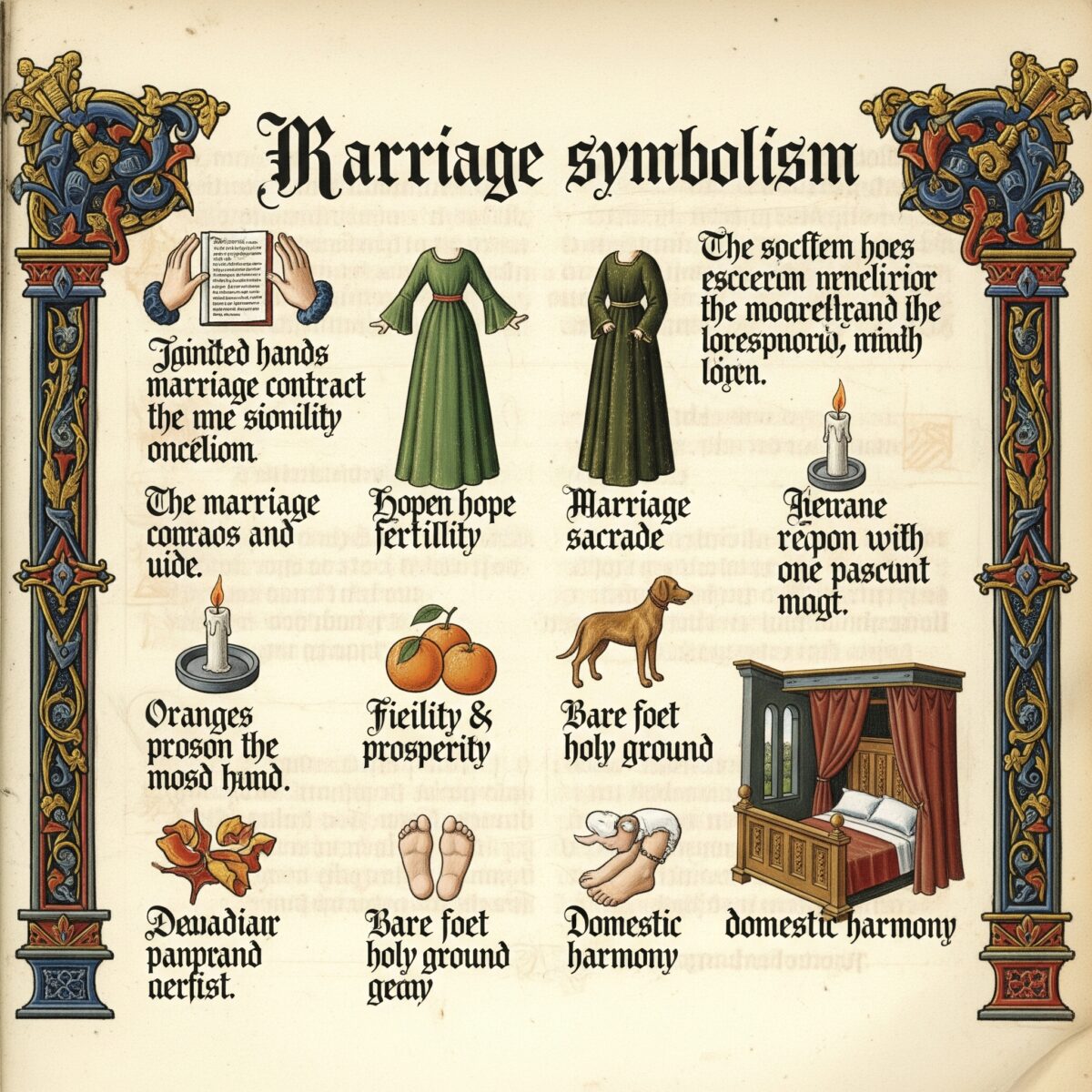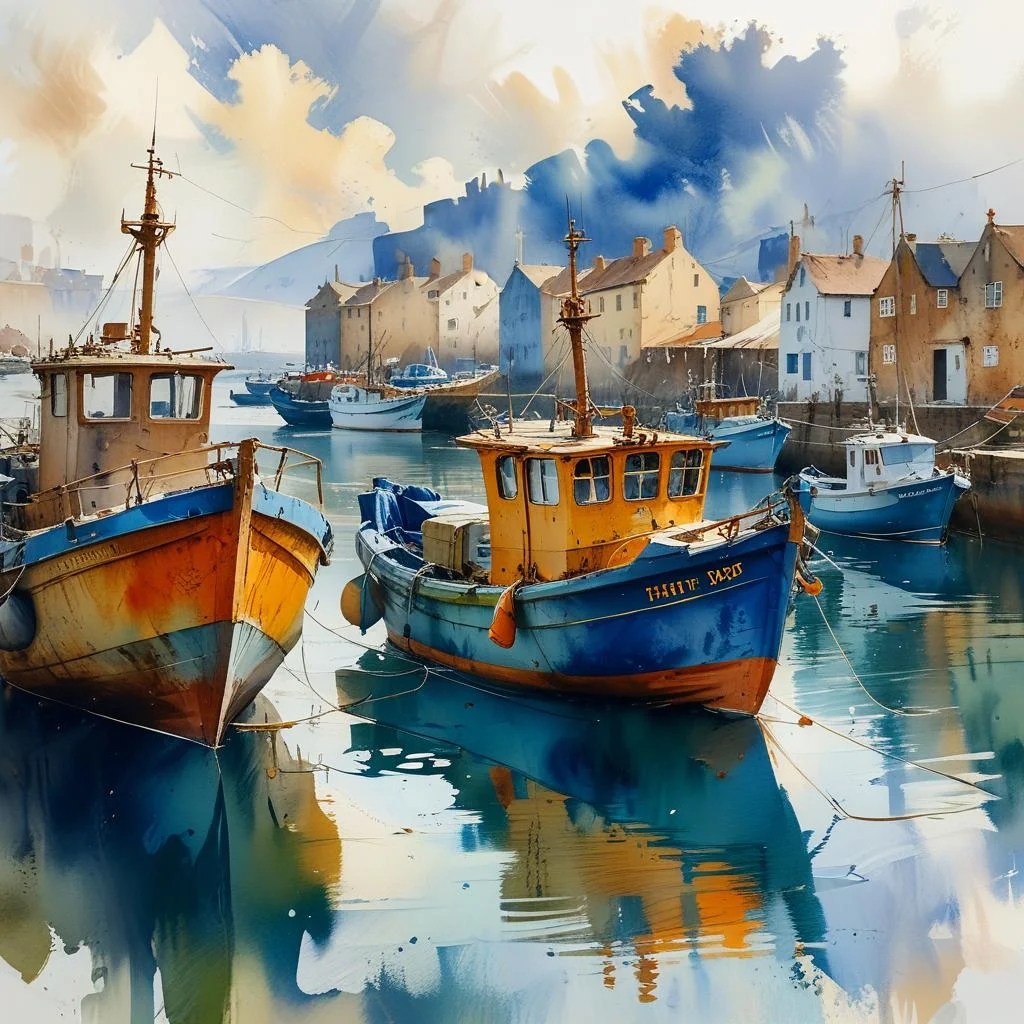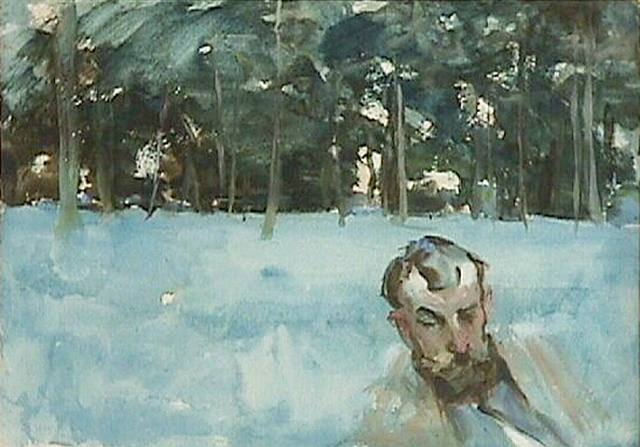Have you ever looked at a painting and felt like there was more to it than meets the eye? That’s exactly what happens when you study symbolism in art, especially in masterpieces like Jan van Eyck’s famous Arnolfini Portrait. This 15th-century painting isn’t just a beautiful picture of a wealthy couple – it’s a treasure map of hidden meanings, secret messages, and clever symbols that tell us incredible stories about love, faith, and life in medieval times.
Key Points Summary

- The Arnolfini Portrait contains dozens of symbolic elements that reveal deeper meanings
- Each object represents specific concepts like loyalty, fertility, wealth, and divine presence
- Van Eyck’s innovative oil painting techniques enhanced the symbolic power of his work
- Understanding these symbols helps us appreciate both the artistry and historical context
- The painting serves as a window into 15th-century marriage customs and social values
The Master Behind the Mystery: Jan van Eyck and His Revolutionary Era
Jan van Eyck lived during an exciting time in art history called the Northern Renaissance. While Italian artists were creating their own masterpieces, Van Eyck was revolutionizing painting in what is now Belgium. He perfected the use of oil paints, which allowed him to create incredibly detailed and realistic images that seemed to glow from within.
Born around 1390, Van Eyck worked for powerful nobles and wealthy merchants in Bruges, one of Europe’s richest trading cities. His oil painting techniques were so advanced that other artists traveled hundreds of miles just to learn from him. The wet-on-wet technique he mastered allowed colors to blend seamlessly, creating depth and richness that made his paintings look almost photographic.
What made Van Eyck special wasn’t just his technical skill – it was how he used every brushstroke to tell a story. In his world, nothing was painted by accident. Every detail had meaning, and understanding these meanings helps us unlock the secret language of art.
First Glance: What Meets the Eye
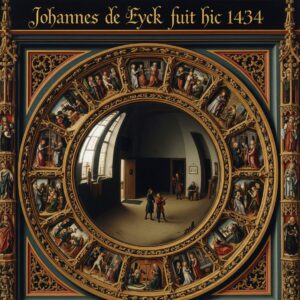
When you first look at the Arnolfini Portrait, you see a well-dressed couple standing in an elegant room. The man wears a large hat and dark robes, while the woman beside him wears a gorgeous green dress. The room around them shows off their wealth – from the ornate chandelier to the expensive oranges on the windowsill.
But here’s where it gets interesting: this isn’t just any portrait. Van Eyck painted it in 1434, and he included himself in the story. Look closely at the mirror in the background, and you’ll see tiny figures reflected there – one of them is probably Van Eyck himself, witnessing this important moment.
The painting measures about 32 by 23 inches and hangs in the National Gallery in London, where millions of visitors come to decode its mysteries every year. What appears to be a simple portrait painting is actually one of history’s most complex visual puzzles.
Decoding the Symbols: Hidden Meanings in Plain Sight
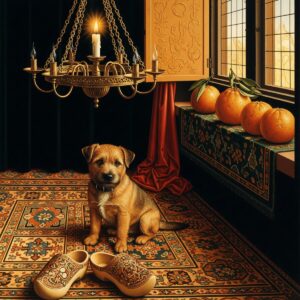
This is where symbolism in art gets really exciting. Van Eyck filled this painting with objects that medieval viewers would have understood immediately, but modern audiences need a translation guide.
The Faithful Dog
That small dog at the couple’s feet isn’t just a pet – it represents loyalty and fidelity in marriage. Dogs were common symbols of faithfulness in medieval art, and this little guy is reminding us about the importance of staying true to your spouse.
The Single Burning Candle
Notice that only one candle burns in the elaborate chandelier above? In the 15th century, this represented the presence of God watching over the marriage ceremony. It also symbolized the unity of two people becoming one.
Luxury Oranges
Those oranges on the windowsill weren’t just expensive decorations. In Northern Europe, oranges were incredibly rare and costly, symbolizing wealth and prosperity. They also represented fertility and the hope for children in the marriage.
The Mysterious Green Dress
The woman’s flowing green dress has sparked centuries of debate. Is she pregnant, or is that just the fashion? The green color traditionally symbolized hope, fertility, and new beginnings – perfect for a young bride. The fullness of the dress follows medieval fashion trends where women gathered fabric at their waist.
The All-Seeing Mirror
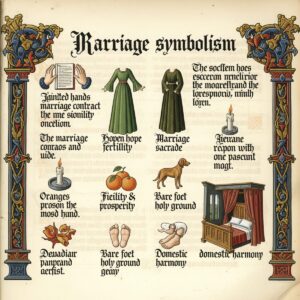
That convex mirror reflects not just the couple, but witnesses to their union – possibly including Van Eyck himself. Mirrors in medieval times represented the eye of God, always watching and knowing the truth.
Understanding these hidden meanings in famous paintings opens up a whole new world of appreciation for medieval artistry and cultural values.
Religious and Social Context: Marriage in Medieval Times
To truly understand this painting’s symbolism, we need to step back into the 15th century. Marriage wasn’t just about love – it was a business arrangement, a religious sacrament, and a social contract all rolled into one.
The Arnolfini family were Italian merchants living in Bruges, part of the wealthy trading class that made the city prosperous. Giovanni Arnolfini, the man in the painting, dealt in luxury goods, which explains the expensive objects surrounding the couple.
Religious symbolism in art was everywhere in Van Eyck’s time. The Church influenced every aspect of daily life, and marriage was considered one of the seven sacred sacraments. Every object in the room would have had religious meaning to contemporary viewers:
| Object | Religious Meaning | Social Meaning |
|---|---|---|
| Single candle | Divine presence | Sacred ceremony |
| Dog | Fidelity to God | Marital loyalty |
| Removed shoes | Holy ground | Domestic intimacy |
| Oranges | Garden of Eden | Material prosperity |
| Green dress | Hope in salvation | Fertile marriage |
The painting might actually show us a wedding ceremony in progress, with Van Eyck serving as an official witness – which would explain his reflection in the mirror and his signature on the wall.
The Art of Symbolic Communication
Van Eyck’s genius lay in how he made his technical mastery serve his symbolic purposes. His revolutionary oil painting techniques allowed him to create incredibly fine details that enhanced each symbol’s power.
The color symbolism throughout the painting tells its own story. The rich reds in the bed symbolize passion and love, while the woman’s green dress represents fertility and hope. Even the brown tones of the man’s clothing suggest earthiness and reliability.
Van Eyck’s composition draws your eye in a specific pattern, leading you from symbol to symbol like reading a book. This wasn’t accidental – medieval artists were trained to guide viewers through visual narratives that taught moral and religious lessons.
The level of realistic detail serves the symbolism too. By making everything look so lifelike, Van Eyck convinced viewers that they were witnessing real events with real meaning, not just artistic imagination.
Modern Interpretations and Lasting Impact
Today’s art historians continue debating the exact meanings of Van Eyck’s symbols. Some see evidence of pregnancy, others argue it’s just fashion. Some believe we’re watching a wedding, others think it’s a portrait of an already-married couple.
What everyone agrees on is that this painting revolutionized how artists could communicate complex ideas through visual symbols. Van Eyck’s influence spread throughout Europe, inspiring generations of painters to embed deeper meanings in their work.
For art historical analysis methods, the Arnolfini Portrait remains a perfect case study. It shows how combining technical skill with symbolic knowledge creates artwork that speaks across centuries.
Modern technology has revealed even more secrets. X-rays and infrared photography show Van Eyck made changes as he worked, adjusting the symbolic elements to perfect their meaning. Conservation work has also revealed details invisible to the naked eye, adding new layers to our understanding.
The National Gallery in London has conducted in-depth technical studies of the Arnolfini Portrait, including X-ray and infrared reflectography analyses. These studies have uncovered several alterations made by van Eyck during the painting process:
- Position Changes: Arnolfini’s hat was initially drawn higher, and his eyes were originally positioned higher and looking more to his left.
- Hand Adjustments: The position of Arnolfini’s right hand was modified, with the entire arm being redrawn.
- Foot Placement: There are three distinct versions of each foot, indicating adjustments in their placement.
- Architectural Elements: Changes were made to the window’s cross-bar and shutters, suggesting a rethinking of the room’s structure.
These findings provide valuable insights into van Eyck’s meticulous working process and the evolution of the painting’s composition.
“The Arnolfini Portrait demonstrates that great art is never just about what you see on the surface – it’s about the layers of meaning that reward careful observation and study.”
Dr. Susan Foister, National Gallery
Frequently Asked Questions
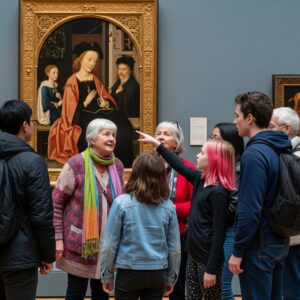
What does the single candle represent in the Arnolfini Portrait? The single burning candle symbolizes the presence of God witnessing the marriage ceremony, as well as the unity of two people becoming one in marriage.
Why is there a dog in the Arnolfini Portrait? The small dog represents loyalty and fidelity in marriage. Dogs were common symbols of faithfulness in medieval art and reminded viewers about the importance of staying true to your spouse.
Is the woman in the Arnolfini Portrait pregnant? This remains debated among art historians. The fullness of her dress follows 15th-century fashion trends, but the green color and hand placement could symbolize fertility and hope for children.
What does the convex mirror show in the background? The mirror reflects two additional figures witnessing the scene, possibly including Van Eyck himself. Mirrors in medieval times represented the all-seeing eye of God.
What do the oranges symbolize in Van Eyck’s painting? The oranges represent wealth (they were extremely expensive in Northern Europe), fertility, and prosperity. They also connected to biblical symbolism of the Garden of Eden.
How did Van Eyck achieve such realistic detail? Van Eyck perfected oil painting techniques, including wet-on-wet methods that allowed colors to blend seamlessly and create incredible depth and luminosity.
Learning to appreciate symbolism in art transforms how we see historical paintings. Van Eyck’s Arnolfini Portrait proves that the greatest artworks reward careful observation with layers of meaning that connect us across centuries. Whether you’re a beginner learning to appreciate art or an experienced viewer, understanding these symbolic languages enriches every museum visit and deepens our connection to human creativity and cultural expression.
For more insights into symbolic artworks and their hidden meanings, explore our comprehensive guides to art symbolism and famous artists and their styles. Discover how understanding symbolism can transform your appreciation of masterpieces from every era.
External Resources:

